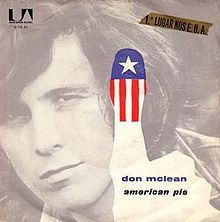Boxer’s Delta levee bill is real estate pork barrel
By Wayne Lusvardi
“I drove my Chevy to the levee but the levee was dry,” go the famous lyrics to singer Don McClean’s 1971 hit song, “American Pie.”
The California Dream of home ownership and speculative riches in land development died in 2008 in Natomas, the last undeveloped area of Sacramento. It died not due to the concurrent bursting of the Mortgage Bubble. It died because the Federal government banned new construction in 2008 until the region’s flood control levees could be further improved.
The levee was dry in Natomas not due to drought, or the economic depression, but to a shortage of pork barrel funding. The levees were dry because the tax levies were dry.
On May 15, 2013, U.S. Sen. Barbara Boxer, D-Calif., head of the Environment and Public Works Committee, cut a bipartisan deal to authorize $1.1 billion in Federal funding to fix the Natomas levees as part of a $12.5 billion package of public works projects around the U.S. Boxer was able to get bipartisan sponsorship for her bill, S. 601, the Water Resources Development Act of 2013, from Senator David Vitter, R-Louisiana.
How funding died for Water Resources Development Act
The Water Resources Development Act was initially authorized in 1974 as a bi-annual appropriation of funding. But WRDA funding died between 1976 to 1986 when the U.S. House of Representatives, the Senate, and the White House could not agree about local cost sharing and environmental mitigation policies.
In 1986, 300 new funding projects were approved. But for the first time, local sponsors had to pay a portion of the costs. This flood of projects created such a backlog that the U.S. Army Corps of Engineers still cannot handle them all. The 2013 WRDA contains provision for a BRAC (military Base Realignment And Closure)-like commission to reduce the backlog of uncompleted projects. However, this new bill is likely to not reduce the backlog but increase it.
The WRDA funding “music died” again from 2008 to 2013, when the U.S. Senate refused to pass a federal budget and the Water Resources Development Act languished.
Fishing for funding in a pork barrel
The Water Resources Development Act is what is commonly known as a political pork barrel of funding for huge water resource development, navigational, flood protection and environmental projects. Pork barrel projects typically contain funding for political “earmarks” and subsidies for projects that would otherwise be uneconomic on a “user-pays” basis. By spreading costs over a large base of federal taxpayers, uneconomic projects can be made to look economic.
The 2013 WRDA cut out obvious earmarks of $2 million to repair the roof of the Smithsonian museum damaged from Hurricane Sandy and $7.3 billion to repair the New York transportation system damaged by Sandy. In both state and federal pork barrel legislation, the titles to large public works spending bills and bond issues often contain the word “water” as a way to sell it to voters.
The Boxer-Vitter bill comes along just as California is releasing its plans and environmental studies to “conserve” the Sacramento Delta. The Bay-Delta Conservation Plan is meant to re-engineer the huge Delta. The hodge-podge of levees, dams, canals, sloughs, sunken island farms and tributary rivers have historically evolved has made the Delta politically unworkable. The Delta is still a vibrant eco-system for predator striped bass and ugly bottom feeder catfish. But it is not considered a politically correct ecosystem for pretty and tiny fish that can be sold to the public as “endangered” — salmon, smelt, etc.
Illegitimacy of Northern Cal water opposition
Boxer’s bill could not come along at a worse time for Northern California water and environmental interests. This is because the bill takes the mask off of Northern California’s claim that the State’s new Delta Plan is a merely “water grab” by Southern California money interests that will harm fish. Northerners claim that Southern California cities should eliminate all swimming pools and lawns before they get any more “Northern California water.” But this claim loses its political legitimacy if mostly what are behind the Natomas levee project are real estate, tourist and commercial fishing interests.
California has already spent $618 million on improvements to the Natomas levees from Proposition 1E and Proposition 84, both approved by voters in 2006, to be eligible for matching funds from the U.S. government.
To qualify Natomas for federal flood control funding, the U.S. Army Corps of Engineers and the Federal Emergency Management Agency downgraded the ratings of the Natomas levees. And of course there would be no flood hazard if the undeveloped portions of Natomas were left as is.
The state has completed 18 miles of levees and the U.S. Army Corps of Engineers has to complete 24-miles of levees. U.S. Senator Dianne Feinstein, D-Calif., had also been seeking nearly $1 billion in funding for Natomas flood control improvements. Feinstein also advocated prohibiting vegetation on or near levees. But that would cost $7 billion to clear vegetation from 2,100 miles of levees, not including ongoing clearing costs.
Drove my Chevy to the tax levy
Rep. Doris Matsui, D-Calif., has been unable for some time to lift a levee repair bill out of the House because of Republican opposition.
So S.601, the Water Infrastructure Finance and Innovation Act of 2013, by Boxer, had to be initiated in the Democratic-controlled Senate through Boxer’s powerful committee. But the Senate Democrats had to buy off Republican opposition with promises of pork barrel funding.
Now that federal government revenues are increasing and the deficit is declining, there is political momentum to reopen the spending floodgates and breach the levees erected against pork barrel funding.
Boxer’s bill now proceeds to the House, where it faces stiff resistance from tax-fighting organizations, pro-business associations, and environmental organizations that oppose its fast-tracking provisions. California Real estate interests, environmental organizations, the building and construction industry, and unions in Central California are anticipated to favor the bill to complete the Natomas flood control improvements.
Related Articles
Mass transit for poor frowned on in Bay Area
There’s plenty of research that shows that bus rapid transit is far the most cost-effective type of mass transit, with
‘Net neutrality’ = double-nickel
President Obama’s “net neutrality” scheme was branded “Obamacare for the Internet” by Sen. Ted Cruz, R-Tex., a 2016 presidential hopeful.
57% of CA infrastructure $ on mass transit? More, more, more!
In 2008, California enacted SB 375, the most important state law you never heard about. It was Senate leader Darrell





